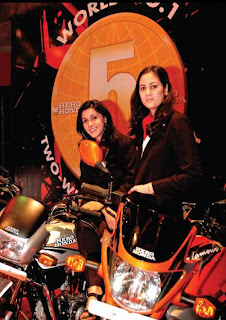IIPM PUBLICATION
Sheolul Smey?! ...
For those who thought that that was the only option...
When
 it’s a question of money, everybody is of the same religion – goes the adage aptly! The general trend of human beings has always been to secure their future... in whatever way they can! There are varied options for all age groups. So why should senior citizens stay back? Firstly, to get introduced to the concept, reverse mortgage schemes open the option of receiving a fixed monthly income for a stipulated span of time. Oh no, it’s not free of cost. It’s all against your house, but even as you reside in it! Though this innovative concept had received a mention in Budget 2006 and also in Budget 2007, banks and housing finance companies (HFCs) had no option than to wait for the final guidelines from the National Housing Bank, which thankfully arrived last month, raising expectations of a flurry of reverse mortgage products.
it’s a question of money, everybody is of the same religion – goes the adage aptly! The general trend of human beings has always been to secure their future... in whatever way they can! There are varied options for all age groups. So why should senior citizens stay back? Firstly, to get introduced to the concept, reverse mortgage schemes open the option of receiving a fixed monthly income for a stipulated span of time. Oh no, it’s not free of cost. It’s all against your house, but even as you reside in it! Though this innovative concept had received a mention in Budget 2006 and also in Budget 2007, banks and housing finance companies (HFCs) had no option than to wait for the final guidelines from the National Housing Bank, which thankfully arrived last month, raising expectations of a flurry of reverse mortgage products.It is expected that private service providers like ICICI Bank and HDFC Bank and also public sector players like Bank of Baroda, Oriental Bank of Commerce, Punjab National Bank, GIC & LIC Housing Finance will be among those off erring a plethora of such products. S. K. Mitter of LIC Housing Finance Limited told B&E, “We are working on the proposal and the products will be launched in a couple of months.” However, first in the series to launch reverse mortgage schemes were Dewan Housing Finance Corporation Limited and Punjab National Bank.
Analytically, these schemes are more similar to pension schemes for senior citizens living in an accommodation owned by them. Financially, it works in a manner that’s quite opposite to buying a house on loan, wherein it’s necessary to pay an equated monthly installment to your bank. In reverse mortgage, the agreement terms are such that while the house is mortgaged to the bank, the bank is supposed to pay out equated monthly amounts to the other party.
Though in this case, technically, the house belongs to the bank, still it’s possible to live in the house till the person (who has mortgaged) and his spouse are alive, even after the mortgage tenure is getting over! As per the norms, a house owner, who has crossed 60 years of age, is eligible to seek a loan up to 60% of the value of residential property by mortgaging the same for a maximum period of 15 years with a bank or a housing finance corporation, while retaining the right to stay in the property. In terms of receiving the equated amounts, the receiver can opt for monthly, quarterly, annual or lump sum payments, or even payments at any other point in time as per his/her discretion. Also, a revaluation of the property has to be undertaken by the bank once every five years. On the event of death of the receiver, the bank offers the legal heirs an option to repay the loan. If the loan is not paid back, the bank has the authority to sell the house and pay back the difference, if any, to the heirs.
Quite popular in developed countries, reverse mortgage is an effective social security measure, which will find a lot of application in India; especially at a time when senior citizens, in dire need of money, sometimes end up with no option other than selling their house and belongings lock, stock and barrel. But the government necessarily needs to ensure that the focus of such products remains ‘social security’ rather than profits. Is that possible? Of course yes, and with classic positive repercussions.
B&E edit bureau: Sunanda Roy
For Complete IIPM Article, Click on IIPM Article
Source : IIPM Editorial, 2007
An IIPM and Professor Arindam Chaudhuri (Renowned Management Guru and Economist) Initiative
For More IIPM Info, Visit Below....
ARINDAM CHAUDHURI’S 4 REASONS WHY YOU SHOULD CHOOS...IIPM :- Cicero's Challenge is going global
The Indian Institute of Planning and Management (I...
After CDMA, will nokia miss the 3G bus ?
Time for Awards at IIPM
STUDENTS AGAINST CORRUPTION & KICKBACKS : SACK
HRIC :- Human Resource Intelligence Cell
Heavy dut(t)y stress Sanjay Dutt Bollywood Actor
The Business of B-School Rankings & The Big Farce
36TH Full Time Programme In Planning & Entrepreneu...
Courtney to quit courting cigarettes!





















